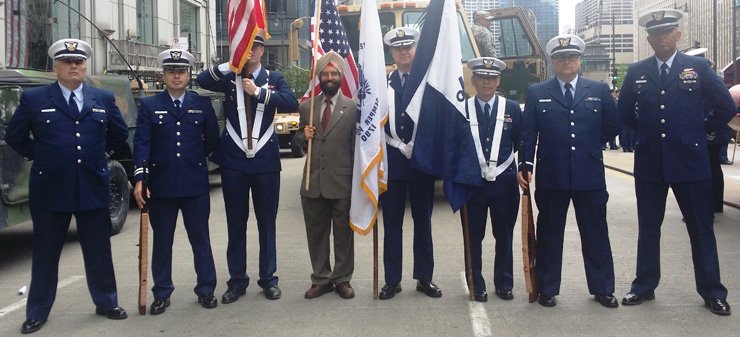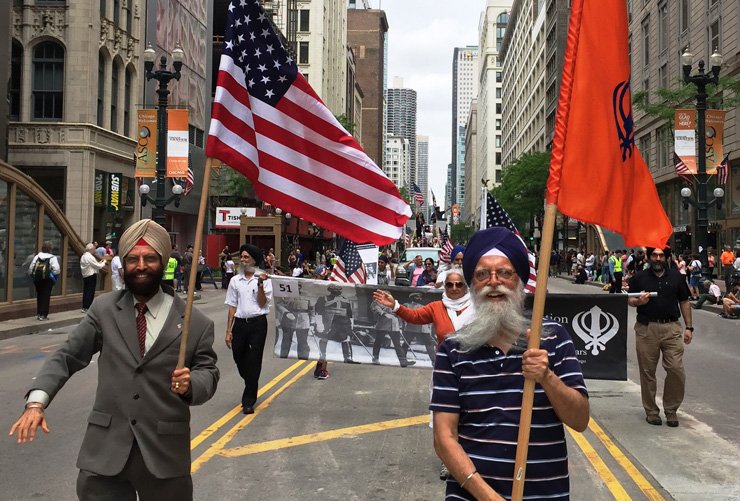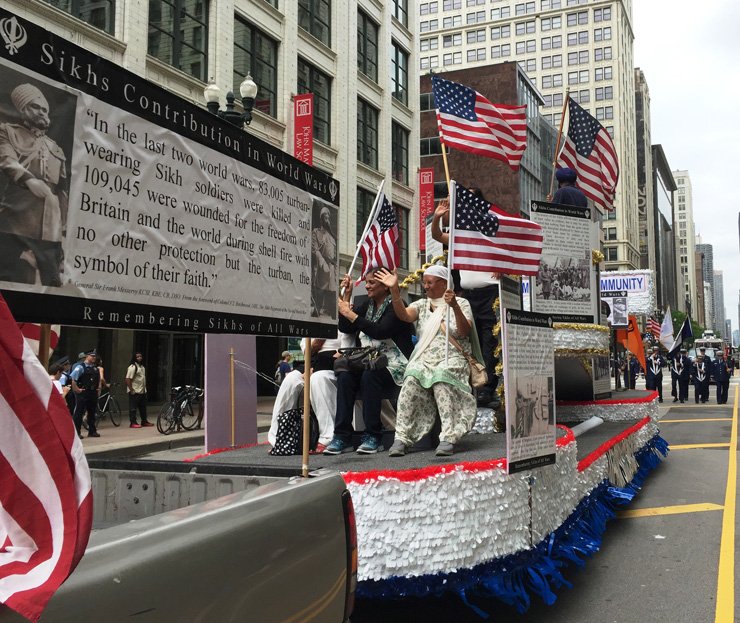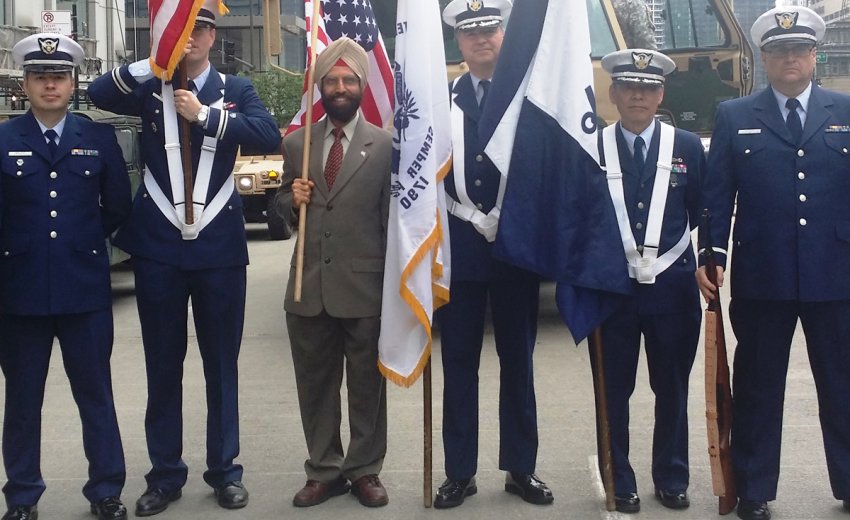
CHICAGO: Sikh American community members of Chicago participated in
the 146th. Chicago Memorial Day Parade on May 28 with a float, flags,
posters, banners and a walking unit to honor and commemorate Sikh’s
Contributions in World Wars I & II.
The banners and poster displays on the float featured photos and quotations
which highlight the contributions of Sikh soldiers to the success of the Allied
Troops during the World Wars. This was the fifth year that the community
has participated in this annual parade.
Sikh Soldiers who gallantly fought and sacrificed their lives for the success of the Allies in World Wars I & II were part of British-India Army. They bravely fought for the allies in France, Belgium, Italy, Israel and many other battle fronts. In the two world wars, 83,005 Sikh soldiers died and 109,045 were wounded while fighting for the Allied forces.
The Sikh participation was spearheaded by Sarwan Singh Raju with help from Jasvir Kaur Singh, Thakar Singh Basati, Kuldip Singh Makker and Rajinder Singh Mago. The two hour long parade organized by the Chicago Department of Cultural Affairs and Special Events stepped off at noon and proceeded south on State Street from Lake Street to Van Buren Street. There were more than 150 contingents in the parade.

“The spectators cheered, saluted, and thanked the Sikh contingent. Ironically Sikh Americans are currently struggling to be allowed to serve their country in uniform due to their articles of faith, beard and turban,” said Rajinder Singh Mago.
Lt. General Kenneth R. Dahl of the U.S. Army was the parade's grand marshal. "There's nothing wrong with firing up the grill and having a good time," he said. "We are not celebrating the loss, we are celebrating what they have secured on our behalf."

Preceding the parade, Chicago Mayor Rahm Emanuel along with service members, veterans and Gold Star families joined Lt. General Dahl for the wreath laying ceremony at the eternal flame at Daley Plaza in remembrance of those who made the ultimate sacrifice in defending or protecting our country. The Illinois Gold Star families, those whose loved ones died while protecting our country were recognized. Respect, honor and remembrance was in the air as Chicago paid tribute to its fallen heroes.
The Chicago Memorial Day Parade honored veterans as well as active duty personnel and drew nearly 10,000 spectators. It commemorated the incredible work our soldiers do to protect this country as well as maintain our freedom.
"There's nothing wrong with firing up the grill and having a good time. We are not celebrating the loss, we are celebrating what they have secured on our behalf," said Lt. General Kenneth R. Dahl of the U.S. Army the parade's grand marshal.

The Chicago parade started in 1870, is considered one of the largest Memorial Day parades in the nation. Participants in the parade include area high school Marching Bands, Drum and Bugle Corps, as well as many Veterans’ and Civil War Enactment groups, 6,000 JROTC students, and the military with equipment.
The Chicago-land Sikh Americans also participated in another Memorial Day Parade in Itasca Illinois, a suburb of Chicago, coordinated by Kuldip Singh Makker. The parade started from Bryn Mawr & Catalpa streets and ended at the Itasca train station.
The Chicago Sikh community also participated in Memorial Day Observance Ceremonies at Hoffman Estates Veterans Memorial Cemetery Site and at St. Peter Lutheran Church in Schaumburg Illinois.

The program included recognition of deceased military members followed by a moment of silence and musical tributes to military personnel and veterans of the army, marines, Navy, Air Force and Coast Guard.
The ceremonies ended with a picnic in the garden decorated with posters of Sikh Soldiers from world wars I & II.
Memorial Day has a rich history. It began shortly after the Civil War ended when General John Logan proclaimed that the 30th day of May be designated for the purpose of decorating the graves of soldiers who died. It was first observed on May 30, 1868.
